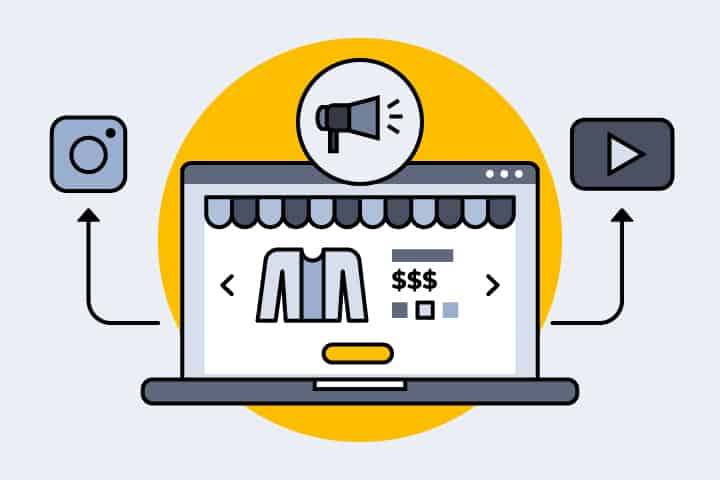Embarking on the affiliate marketing journey can be an exhilarating venture, especially when you’re armed with the right strategies from the get-go. Let’s dive into the fundamentals that lay the groundwork for a successful affiliate marketing career. Whether you’re a seasoned pro or just dipping your toes into these waters, understanding your audience and crafting a strategic plan are steps you cannot afford to skip.
Identifying Your Target Audience and Niche
Think of your target audience as the compass guiding your affiliate marketing ship; without knowing your direction, you’ll be adrift in a sea of competition. Pinpointing who your audience is and what niche you’ll focus on is more than just a preliminary step—it’s the foundation upon which your entire strategy rests.
- Interest and Expertise: Your chosen niche should be a beautiful blend of your interests and expertise. Passion drives content creation, making it more authentic and engaging.
- Research is Key: Dive into market research to uncover niches with high demand but low competition. Tools like Google Trends or forums in your area of interest can provide invaluable insights.
Let’s say you’re passionate about eco-friendly living. The niche is broad, yet by narrowing down to eco-friendly travel products, you target a specific audience looking for sustainable travel solutions. This specificity makes your marketing efforts more focused and effective.
Setting Up a Strategic Affiliate Marketing Plan
A strategic plan is your roadmap, outlining where you want to go and how you’ll get there. It’s about setting clear objectives, choosing the right affiliate products, and deciding on the channels through which you’ll promote them.
- Goal Setting: Begin with the end in mind. Are you aiming for a certain income? Or perhaps you want to establish yourself as an authority in your niche? Setting SMART (Specific, Measurable, Achievable, Relevant, Time-bound) goals gives you targets to aim for.
- Strategy Development: This involves selecting the affiliate products that resonate with your audience and align with your niche. It’s also about choosing the right mix of promotional channels—be it through blogging, social media, email marketing, or video content.
- Execution Timelines: Break down your plan into actionable steps with deadlines. This not only keeps you organized but also ensures you’re consistently making progress towards your goals.
For instance, if your goal is to earn $1,000 in affiliate income within the first three months, you might decide to focus on SEO-optimized blogging and Pinterest marketing as your primary channels, given their potential for long-term traffic.
Mixing It Up
- Use a variety of content formats to keep your audience engaged. Blog posts, videos, infographics, and podcasts can all be excellent vehicles for affiliate links.
- Regularly review your performance. Tools like Google Analytics can help you understand what’s working and what’s not, allowing you to pivot as needed.
Remember, affiliate marketing is not a “set it and forget it” type of endeavor. It requires patience, persistence, and continuous learning. But by starting with a solid foundation—knowing your audience and having a clear plan—you’re setting yourself up for success.
Keeping It Real
Did you know that over 80% of brands have affiliate programs (according to Mediakix)? This staggering statistic highlights the vast opportunities in affiliate marketing, but also the importance of standing out through authenticity and strategic planning. By focusing on providing genuine value to your audience and strategically positioning your affiliate products, you’re not just selling; you’re solving problems and enriching lives.
Content Creation and Optimization Strategies

In the digital age, content is king. But not just any content—your audience craves information that’s engaging, informative, and yes, even entertaining. Let’s unravel the secrets to creating content that not only captivates your audience but also integrates affiliate links seamlessly.
Crafting Engaging and Informative Blog Content
The heart of any successful affiliate marketing strategy lies in the content you produce. Blog posts offer a prime opportunity to share valuable information while subtly weaving in affiliate links. But how do you ensure your blog resonates with readers?
- Know Your Audience: Understanding who you’re writing for is the first step to creating content that speaks to them. Are they beginners or seasoned experts? Tailor your tone and information accordingly.
- Provide Real Value: Each post should solve a problem, answer a question, or offer insights that readers can’t find elsewhere. This value is what will keep them coming back for more.
- Naturally Incorporate Affiliate Links: Your affiliate products should feel like natural extensions of your content. For example, if you’re writing about the best hiking gear, linking to your recommended affiliate products provides a useful resource to your readers.
The Stats Speak for Themselves
Did you know that marketers who prioritize blogging are 13 times more likely to see positive ROI (HubSpot)? And when you consider that 77% of internet users read blogs (Impactplus), the potential reach and impact of your blog content become clear.
Leveraging Video Content for Higher Engagement
In an era where YouTube has become the second largest search engine, ignoring video content is no longer an option for affiliate marketers. Videos not only increase engagement but also offer a dynamic way to showcase products and share affiliate links.
- Show, Don’t Just Tell: Product reviews and tutorials in video format allow your audience to see products in action. This builds trust and helps viewers make informed decisions.
- Engagement Through Education: How-to guides and tutorials are excellent for teaching your audience something new while integrating affiliate products as the tools or resources needed for the task.
Embrace the Power of Video
Consider this: viewers retain 95% of a message when they watch it in a video compared to 10% when reading it in text (Insivia). And with the rise of platforms like TikTok and Instagram Reels, short-form video content has never been more popular or accessible.
Bringing It All Together
Creating standout blog and video content doesn’t have to be a daunting task. Here are a few bullet points to keep in mind:
- Focus on quality over quantity. One well-researched, well-produced piece of content is worth more than a dozen rushed jobs.
- Use tools and analytics to understand what your audience loves and create more of it.
- Don’t be afraid to show your personality. People connect with people, not just faceless brands.
Enhancing Reach with Social Media and Email Marketing
In the digital age, your ability to connect with an audience can make or break your affiliate marketing success. Luckily, social media and email marketing offer powerful tools to not only reach your audience but to engage with them on a deeper level. Let’s explore how you can harness these platforms to boost your affiliate marketing efforts.
Building an Engaged Social Media Presence
Social media is where conversations happen, trends are born, and products are discovered. It’s a dynamic platform for affiliate marketers to showcase products in a context that feels personal and direct. But how do you build an engaged presence that translates to affiliate success?
- Choose Your Platforms Wisely: Not all social media platforms are created equal, especially when it comes to your target audience. Instagram and Pinterest, for example, are visual platforms ideal for lifestyle and product showcases, while LinkedIn might be more suitable for B2B products.
- Create Shareable Content: Engagement is the currency of social media. Create content that resonates with your audience, whether it’s informative posts, entertaining videos, or eye-catching infographics. Remember, the more your content is shared, the wider your reach.
- Engage with Your Audience: Social media is a two-way street. Respond to comments, participate in conversations, and maybe even run live Q&A sessions. Building a relationship with your followers can turn them from passive viewers into active promoters.
A Stat to Remember: According to a survey by Sprout Social, 74% of consumers rely on their social networks to make purchasing decisions. That’s a massive audience ready to be tapped into with the right strategy.
Utilizing Email Marketing to Nurture Leads
Email marketing might seem like an old-school tactic, but its effectiveness is undeniable. It allows for direct communication with your audience, offering a personalized approach to promoting affiliate products. Here’s how you can leverage email to nurture leads and drive conversions.
- Build Your List with Value: Offer something irresistible in exchange for email signups, be it an ebook, a discount code, or exclusive content. This initial value exchange sets the tone for your relationship. In a survey by DontPayFull.com, 79% of shoppers would give their email address in exchange for a discount code.
- Segment Your Audience: Not all subscribers are interested in the same products. Use segmentation to tailor your emails according to subscriber interests, behaviors, and demographics. Personalized emails ensure relevance, which can significantly increase your click-through rates.
- Provide Exclusive Content: Your email list should feel like a VIP club. Offer exclusive deals, sneak peeks, and valuable content that’s not available elsewhere. This exclusivity can foster loyalty and encourage more frequent engagements with your affiliate links.
Engagement Is Key
Remember, the goal of both social media and email marketing is to build relationships with your audience. By engaging with them authentically and offering value at every turn, you’ll not only enhance your reach but also deepen the trust your audience places in your recommendations. And in the world of affiliate marketing, trust is the cornerstone of conversion.
Advanced Affiliate Link Promotion Techniques
In the ever-evolving world of affiliate marketing, staying ahead means adopting innovative strategies. Today, let’s explore how data analytics can personalize your recommendations and how paid advertising can catapult your visibility to new heights.
Personalizing Recommendations with Data Analytics
- In the digital age, data is akin to gold, especially when it comes to understanding your audience’s preferences. But how do you mine this gold to tailor your affiliate link promotions? The answer lies in data analytics.
- Track and Analyze: Utilize tools like Google Analytics to track your audience’s behavior on your website. Which pages do they spend the most time on? What content drives the most engagement? These insights can help you understand what your audience is truly interested in.
- Segmentation is Key: Break down your audience into segments based on their behaviors, interests, and interactions with your content. This segmentation allows you to personalize your recommendations in a way that feels relevant to each group.
For instance, if data shows that a segment of your audience frequently visits pages related to eco-friendly products, you can tailor your affiliate promotions to include eco-friendly picks, significantly increasing the likelihood of engagement and conversion.
Leveraging Data for Tailored Promotions:
- Use the insights from analytics to craft email campaigns that speak directly to the interests of each segment.
- Tailor your content strategy to include blog posts, videos, and social media content that aligns with the preferences of your audience segments.
Adopting Paid Advertising for Expanded Visibility

While organic reach is invaluable, incorporating paid advertising and adtech tools into your strategy can significantly amplify your affiliate marketing efforts. Let’s dive into how you can use paid ads to drive targeted traffic to your affiliate link
- Social Media Advertising: Platforms like Facebook, Instagram, and LinkedIn offer sophisticated targeting options that allow you to reach specific demographics, interests, and behaviors. Crafting compelling ads that lead to your affiliate products can dramatically increase your visibility and conversions.
- Search Engine Marketing (SEM): Using Google Ads to appear at the top of search results for relevant keywords is a powerful way to capture high-intent traffic. Keyword research is crucial here; you want to bid on terms closely related to the affiliate products you’re promoting.
Effective Paid Advertising Strategies:
- Start small and test multiple ad sets to see what works best in terms of engagement and conversion rates.
- Focus on clear, compelling calls-to-action (CTAs) in your ads. Whether it’s “Learn More” or “Buy Now,” make sure your CTA aligns with the goal of the ad.
A Stat Worth Noting: According to a report by Statista, global digital ad spending is expected to surpass $645 billion by 2024. This is why, by integrating PPC Reporting, marketers can easily monitor ad performance, adjust budgets, and ensure their efforts are aligned with business goals.
Scaling Your Affiliate Marketing Efforts
As you venture deeper into the world of affiliate marketing, you’ll quickly realize that growth is not just about adding more affiliate links to your content. It’s about strategically expanding your reach and ensuring that your audience finds immense value in what you provide. Let’s dive into how implementing SEO best practices and creating a resource hub can significantly scale your affiliate marketing efforts.
Implementing SEO Best Practices for Organic Growth
At the heart of SEO is keyword research, a process that can feel a bit like detective work. By understanding the terms your potential customers are searching for, you can tailor your content to meet them right where they are. Tools like Google Keyword Planner and SEMrush offer insights into search volume and competition levels, helping you identify the sweet spots.
- On-Page SEO: This involves optimizing individual elements on your website, such as titles, headings, and meta descriptions, to include your target keywords. It’s like leaving breadcrumbs for search engines to find your content and deem it relevant.
- Content Optimization: Beyond just sprinkling in keywords, your content should genuinely address the needs and questions of your audience. This means creating in-depth articles, tutorials, and guides that not only rank well but also provide real value.
Why It Matters
Consider this: According to BrightEdge, over 53% of all trackable website traffic comes from organic search. This stat underscores the importance of SEO in driving sustainable, long-term growth for your affiliate marketing efforts.
Creating a Resource Hub for Your Audience
Imagine having a central place on your website where your audience can find all your recommended products, services, and resources. This isn’t just convenient for your visitors; it’s a strategic move to establish your site as a go-to resource in your niche.
- Ease of Access: A resource hub makes it incredibly easy for your audience to find what they’re looking for, increasing the likelihood of click-throughs and conversions.
- Positioning Yourself as an Authority: By curating a selection of recommended products and resources, you’re not just selling; you’re advising. This positions you as an authority in your niche, building trust with your audience.
Incorporating Best Practices:
When setting up your resource hub, consider the following:
- Keep it organized and easy to navigate.
- Regularly update it with new recommendations and resources.
- Include brief reviews or summaries for each recommendation to add context and value.
A Real-World Example
Take a look at Wirecutter, now a part of The New York Times. They’ve mastered the art of creating in-depth, well-researched guides that not only rank well but also serve as invaluable resources for their audience. Their approach underscores the effectiveness of combining SEO best practices with valuable content curation.
Fostering Trust and Building Long-Term Relationships
In the vast ocean of affiliate marketing, trust is the lighthouse that guides consumers to your shores. It’s the bedrock upon which long-term relationships are built, ensuring not just a one-time click but a loyal following. So, how do you cultivate this trust and loyalty? Let’s delve into the practices of transparency and community engagement.
Practicing Transparency with Affiliate Disclosures
Transparency isn’t just a buzzword; it’s a commitment to honesty that resonates deeply with audiences. Disclosing affiliate relationships is not just a legal requirement; it’s a gesture of respect towards your audience, acknowledging their right to know.
- Clear Disclosures: Ensure that your affiliate disclosures are conspicuous and clear. A simple statement at the beginning of your content can go a long way in maintaining trust.
- Educate Your Audience: Sometimes, a brief explanation of what affiliate links are and how they support your content can demystify the process for your audience, making them more likely to support you.
According to a survey by the CMA, 86% of consumers appreciate transparency on social media about sponsored content, highlighting the importance of open communication in building trust.
Engaging with Your Community for Feedback and Loyalty
Engagement goes beyond mere replies and likes; it’s about creating a dialogue, understanding your audience’s needs, and acting on their feedback. Here’s how you can foster a sense of community and loyalty:
- Active Listening: Use your platforms to ask for feedback, conduct polls, or simply engage in conversations. Showing that you value their opinions can significantly enhance loyalty.
- Community Building: Consider creating a dedicated space for your audience to interact, be it a forum, a Facebook group, or another platform. This not only fosters community but also turns your audience into advocates for your brand.
Benefits of a Loyal Community:
- They are more likely to trust your recommendations and use your affiliate links.
- Feedback from your community can guide your content strategy, making your offerings even more relevant and valuable.
Leveraging Technology to Boost Your Affiliate Marketing

In the fast-paced world of affiliate marketing, staying ahead of the curve means embracing the latest technological advancements. Artificial Intelligence (AI) and blockchain are not just buzzwords; they are game-changers that can revolutionize how you approach affiliate marketing. Let’s explore how these technologies can enhance your strategies, improve efficiency, and ultimately, increase your earnings.
Exploring the Use of AI and Machine Learning
AI has the power to transform content creation by helping you produce more relevant and engaging content. Tools powered by AI can analyze data to predict what content will perform best with your target audience, from the topics they’re interested in to the format they prefer.
- Content Personalization: AI algorithms can tailor content to individual users based on their past interactions, significantly increasing engagement rates.
- Performance Analysis: Machine learning can evaluate which affiliate products are most likely to resonate with your audience, optimizing your promotional strategies.
Real-World Application
Consider how platforms like Netflix use AI to recommend shows to viewers based on their watching habits. Similarly, AI can help affiliate marketers recommend products that their audience is more likely to purchase, thereby increasing conversion rates.
Harnessing Blockchain for Transparency and Efficiency
Blockchain technology offers unparalleled transparency and security in transactions, which is a significant boon for affiliate marketers. By using blockchain, you can ensure that every click, lead, and sale is accurately tracked and recorded, minimizing the risk of discrepancies and disputes.
- Smart Contracts: These self-executing contracts with the terms directly written into code can automate payments once certain conditions are met, ensuring affiliates are paid fairly and promptly.
- Trust and Verification: Blockchain’s decentralized nature means transactions can be verified by multiple parties, ensuring transparency and building trust among affiliates, merchants, and networks.
Benefits for Affiliate Marketers:
- Reduced risk of fraud and error in affiliate transactions.
- Faster and more reliable payment processes.
Putting It Into Perspective
Imagine a scenario where every affiliate sale you make is instantly verified and compensated through smart contracts. Not only does this streamline the payment process, but it also builds trust between you and the merchant, as both parties have clear visibility into the transactions.
Technology: The New Frontier in Affiliate Marketing
Incorporating AI and blockchain into your affiliate marketing efforts can seem daunting at first. However, the potential benefits they offer in terms of personalization, efficiency, and transparency are too significant to ignore. Whether it’s through optimizing your content strategy with AI or ensuring fair and transparent transactions with blockchain, these technologies can provide you with a competitive edge in the ever-evolving affiliate marketing landscape.
Staying Ahead in the Ever-Evolving Affiliate Landscape
The affiliate marketing world is dynamic, with new trends, platforms, and technologies emerging at a breakneck pace. To thrive, it’s essential to stay agile, continuously learning, and adapting your strategies. Let’s delve into how you can remain competitive and scale your success in this ever-changing environment.
Keeping Abreast of Emerging Trends and Technologies
In affiliate marketing, complacency can be your worst enemy. The landscape is constantly evolving, with new channels, tools, and audience behaviors coming into play. How can you stay ahead?
- Continuous Learning: Dedicate time each week to read industry blogs, attend webinars, and participate in forums or use online tutoring services. This habit ensures you’re always in the loop on the latest trends and technologies.
- Experimentation: Don’t be afraid to test out new platforms or tools. Whether it’s a new social media site, an affiliate network, or marketing software, experimentation can uncover new avenues for growth.
Real-Life Inspiration
Take, for example, the rise of TikTok as a marketing platform. Early adopters who recognized its potential and learned how to leverage its unique format have seen significant returns on their affiliate marketing efforts.
Analyzing Performance and Iterating for Success
Success in affiliate marketing doesn’t happen overnight. It’s the result of meticulous planning, execution, and, most importantly, regular performance analysis. Here’s how you can make data-driven decisions to refine your strategy:
- Track Key Performance Indicators (KPIs): Identify which metrics matter most to your campaigns, such as click-through rates (CTR), conversion rates, and average order value (AOV). Tools like Google Analytics can offer invaluable insights.
- Strategic Adjustments: Use your performance data to inform your strategy. If certain affiliate products or content types are underperforming, pivot your focus toward what works.
Bullet Points for Effective Analysis:
- Regularly review your affiliate links’ performance.
- Test different content formats and marketing channels.
- Adapt your strategy based on data, not just intuition.
Case Study to Consider
Consider Amazon’s affiliate program adjustments over the years. By analyzing affiliate performance, Amazon has continually optimized its commission structure to align with consumer behavior and market trends. Affiliates who monitor these changes and adjust their strategies accordingly can maintain or even increase their earnings despite the shifts. To stand out in this highly competitive environment, sellers often need to leverage advanced tools and strategies. One effective method is to automate amazon advertising, which can significantly boost visibility and sales.
Navigating the Affiliate Marketing Journey
Staying ahead in the affiliate marketing landscape requires a blend of proactive learning, strategic experimentation, and data-driven optimization. By embracing change and making informed adjustments to your approach, you can navigate the complexities of affiliate marketing and achieve long-term success. Remember, in a field as dynamic as affiliate marketing, flexibility and a willingness to learn are your greatest assets. So, are you ready to adapt and thrive in this exciting industry?

